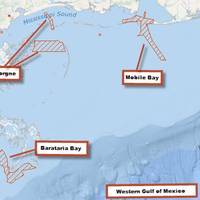NOAA Begins Hydrographic Survey Season

New data will update nautical charts around the country. As sure as spring arrives, NOAA vessels and independent contractors are hitting the seas for the nation's 180th hydrographic surveying season, collecting data for over two thousand square nautical miles in high-traffic U.S. coastal waters. "Nautical charts are the foundation for the nation's maritime economy, and NOAA hydrographers spend months at sea, surveying critical areas to ensure safe navigation for the shipping, fishing, and boating communities," said Rear Admiral Gerd Glang, director of the Office of Coast Survey.
Grassy Point Favoured as NW Canada LNG Terminal
Grassy Point terminal project, north of Prince Rupert, gains ground as it would steer shipping traffic away from sheltered coastal waters. The Coast Tsimshian village of Lax Kw'alaams north of Prince Rupert could be poised to become a liquefied natural gas centre with significant advantages over Prince Rupert and Kitimat after the province announced it has received four new LNG proposals. All four identify Grassy Point, across the harbour from Lax Kw'alaams, formerly Port Simpson, as the potential site for a terminal, reports 'The Vancouver Sun'. The Coast Tsimshian are already involved in talks with the energy players in the nascent LNG industry in the northwest and are generally supportive of it.
The Fate of the Iron: More Lessons From The Titantic Tragedy
Tragedies in the maritime industry are often revered, particularly when a large loss of life occurs, as was the case when RMS Titanic sank on April 14, 1912. The industry is also noted for its ability to learn from mishaps, incorporating changes in design, procedures and operations that are designed to avert future mishasps. Lessons learned and positive results occurring in the aftermath of Titanic are numerous and still growing, as a team exploring the formation of rusticles on Titanic's hull are drawing some interesting conclusions regarding the natural removal of iron from steel, and the potential compromise in safety and performance this may have, particularly on double-hulled vessels. The fascination with and examination of Titanic has been thorough, to put it mildly.





